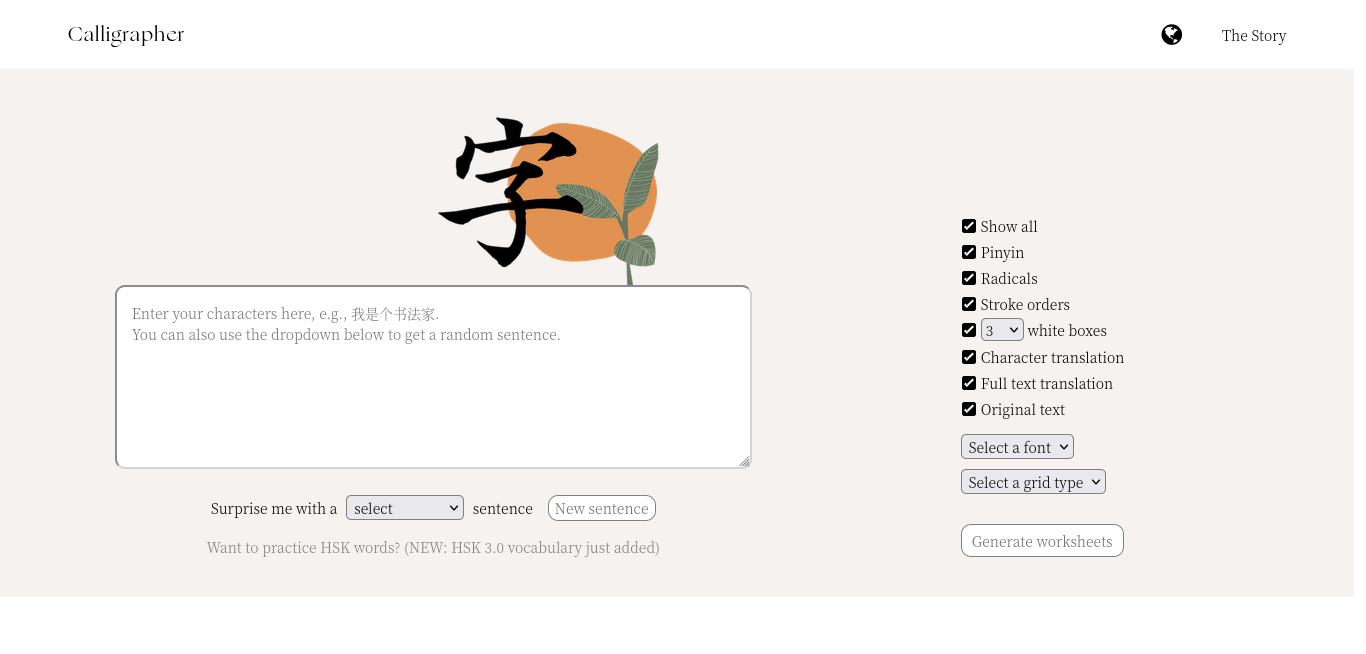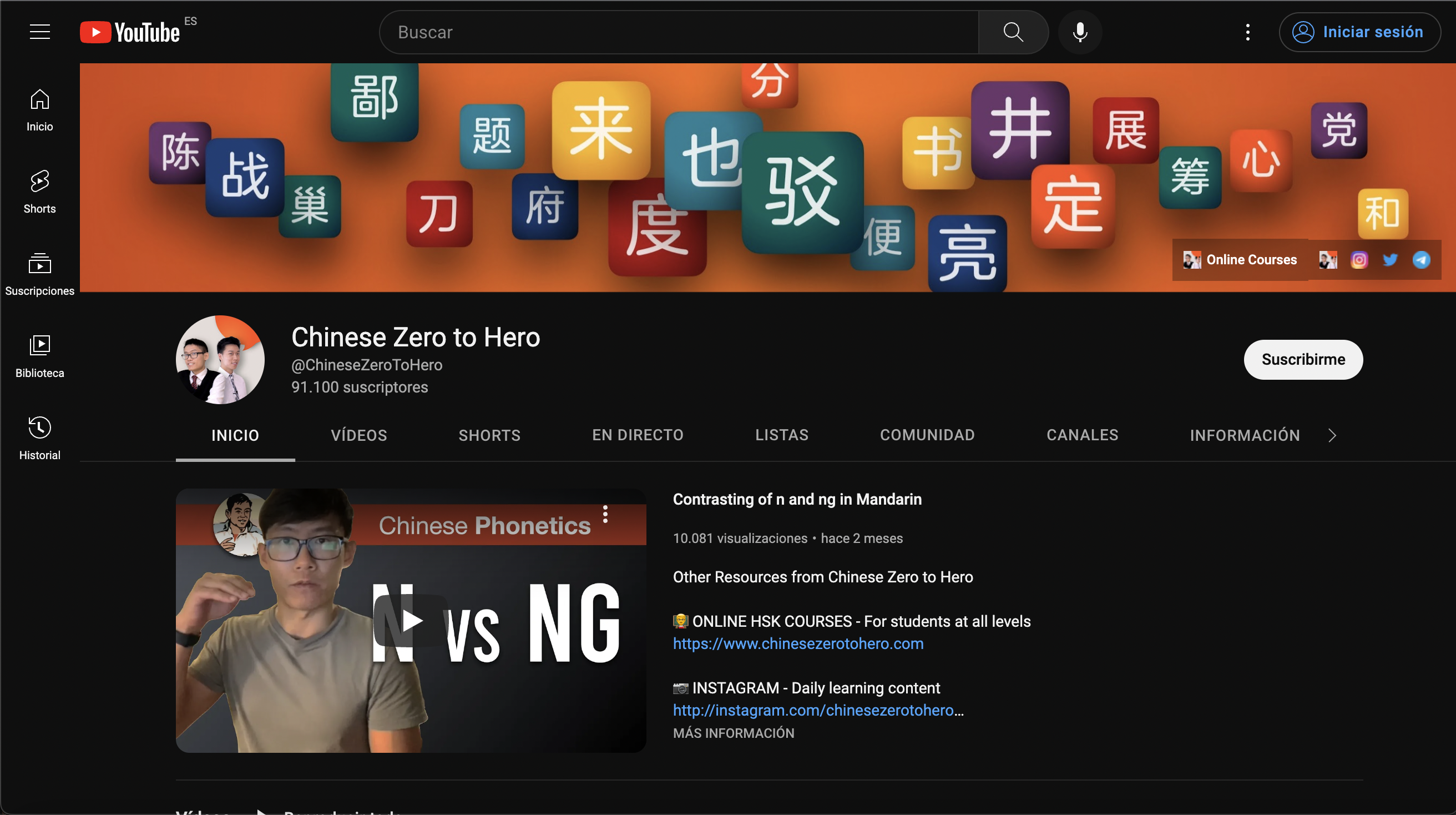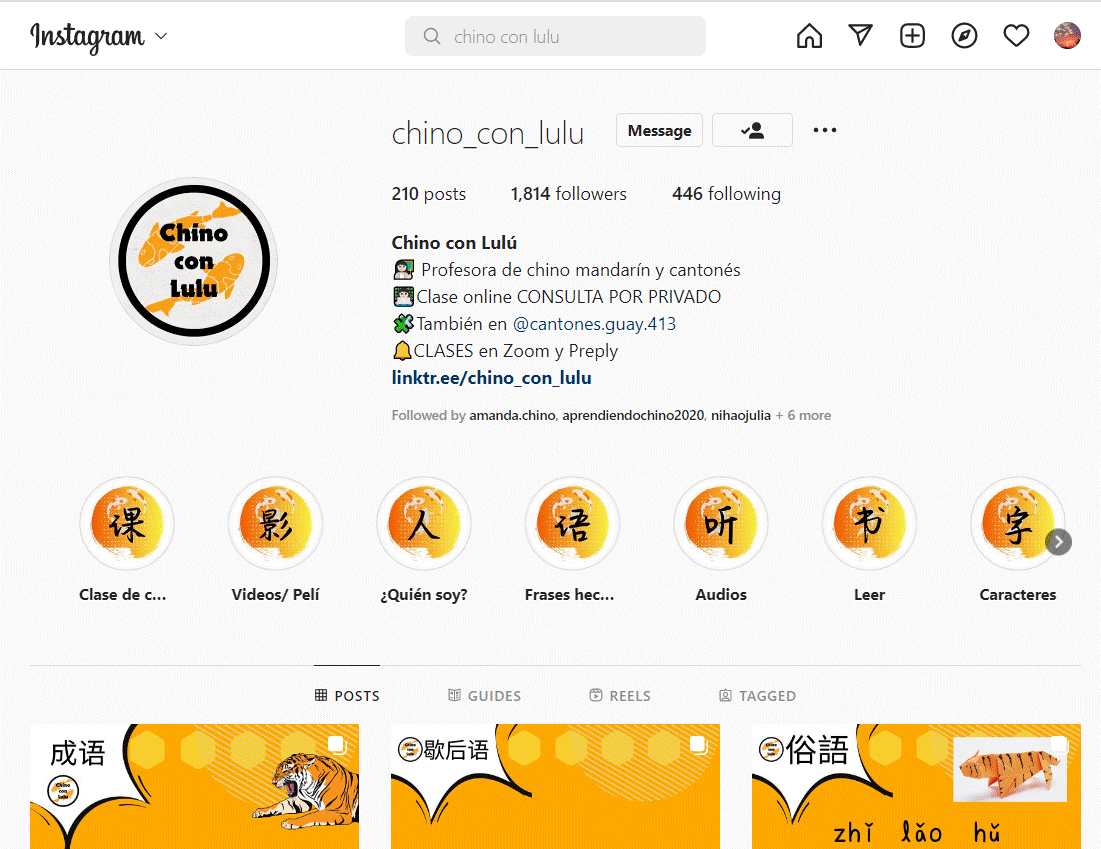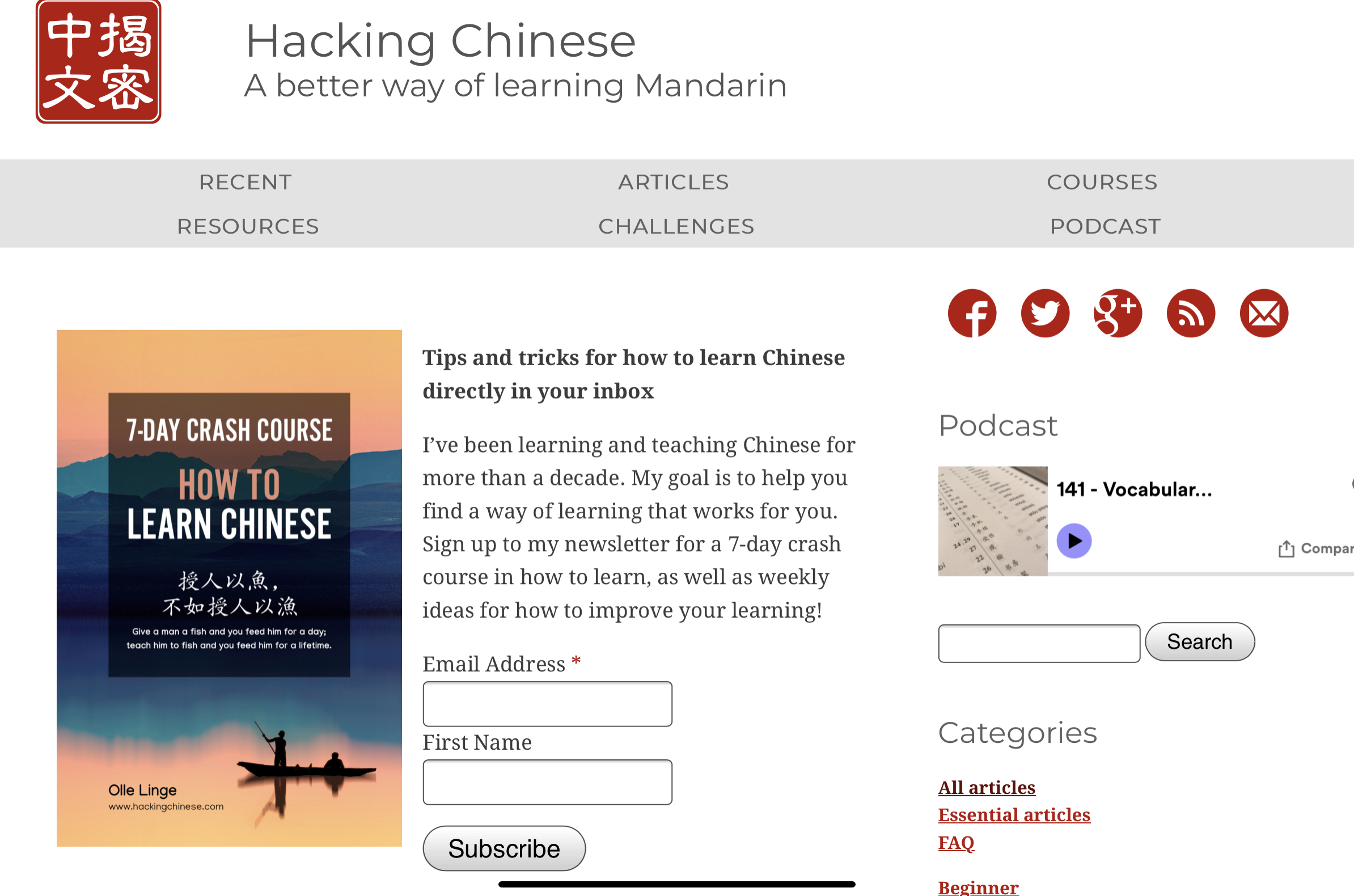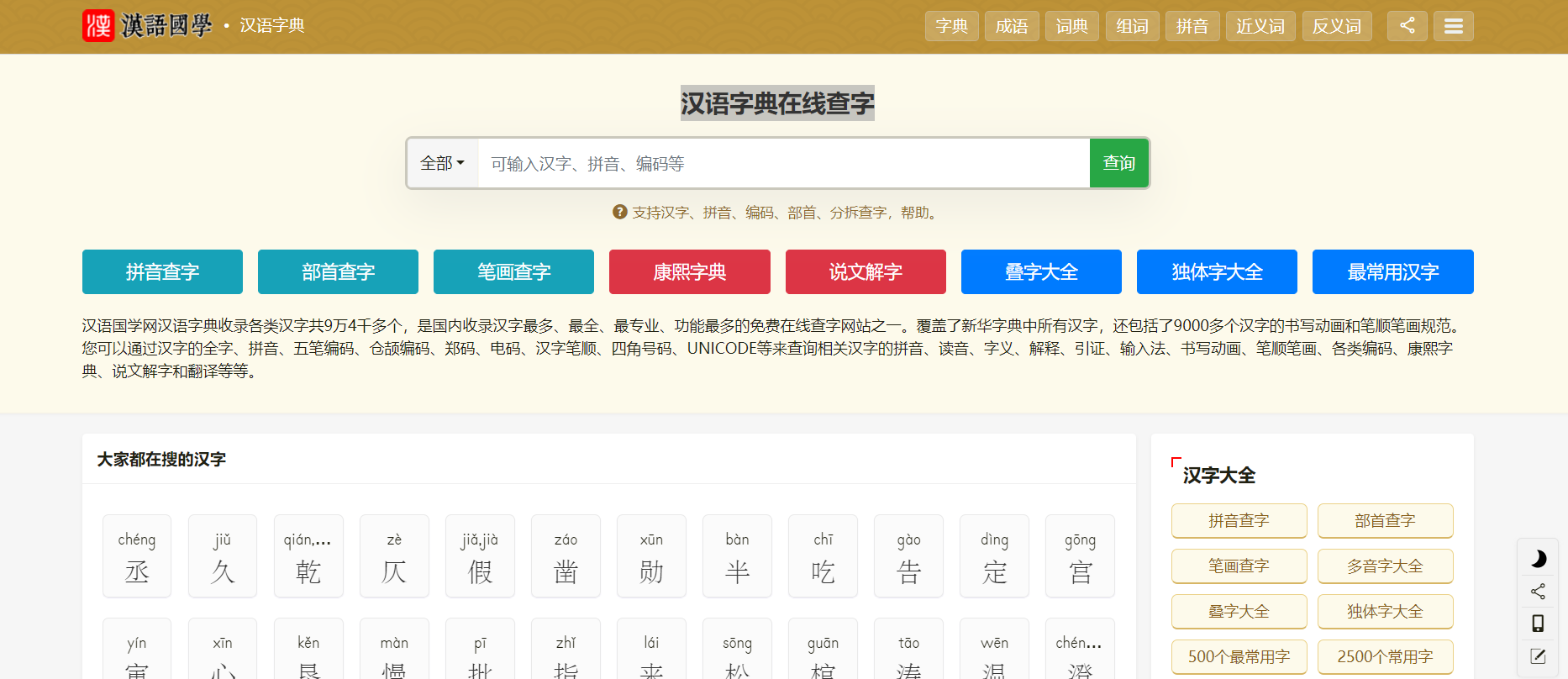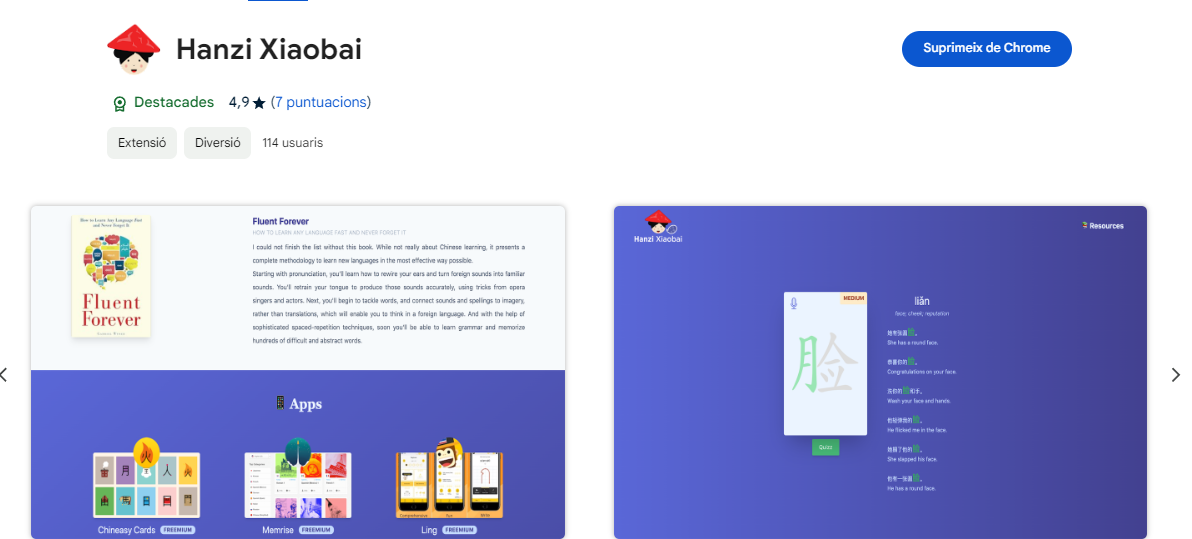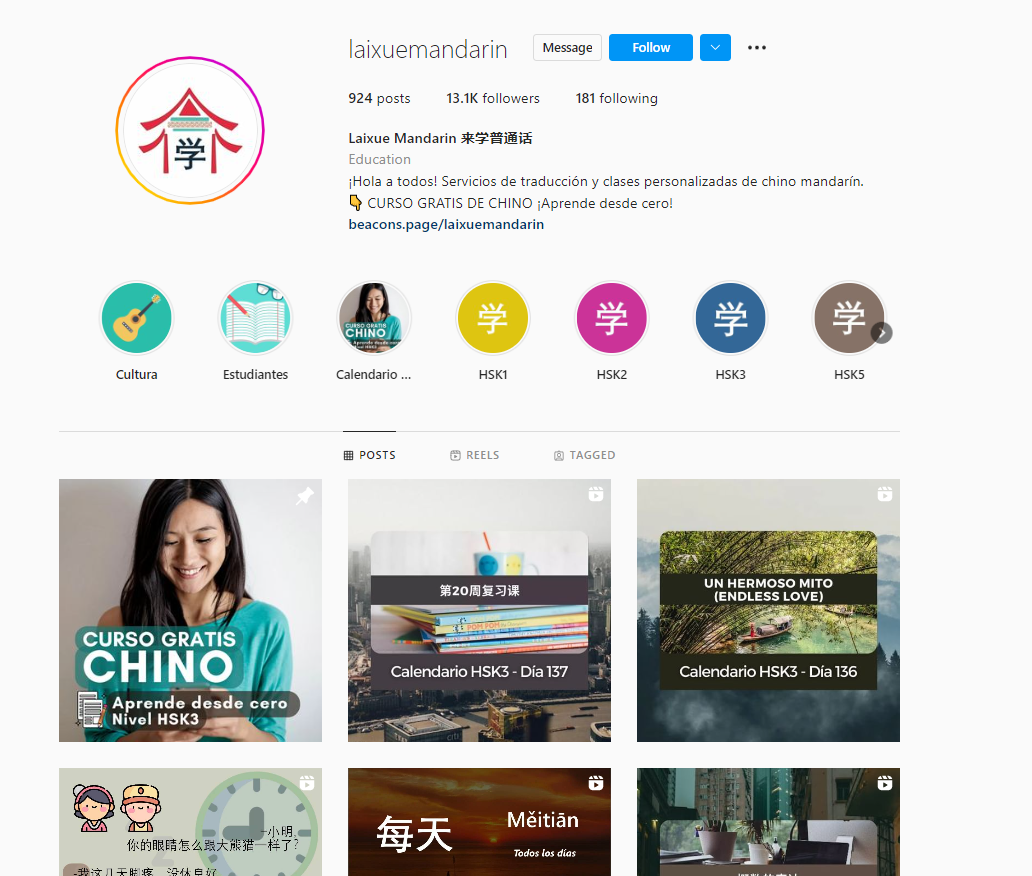434 Resultados
Página 1 de 18
A Primer in Chinese Buddhist Writings
These are materials I have compiled for students and scholars to learn to read Buddhist texts in Chinese. This is very much a work in progress; suggestions for improvement are welcome.
Alex Amies has prepared a web-based version for volumes 1 and 2. Unlike the version below, which is a simple PDF for download, this version allows you to hover over characters to see their definitions from the glossary. (The latest version of Volume 1 is the PDF version; I need to update the following):
http://www.primerbuddhism.org/
Aprende chino con Hanyu
¿Estás estudiando chino? Pues gracias a los podcasts de Hanyu Chinese School podrás practicar tu chino escuchando diálogos en chino y repasar aspectos gramaticales y culturales del idioma chino mandarín.
Chinese Boost
Chinese Boost is a Chinese learning website with free resources on how to learn Chinese, and materials you can use to do that. All content here is free and open for everyone to use, and always will be. We want to help all Chinese learners improve their Chinese with useful resources.
Chinese Calligrapher
Calligrapher generates printer and tablet-friendly PDF worksheets to aid writing Chinese characters much like the worksheets that I used in elementary school. However, instead of having only traceable characters, Calligrapher gives customizable lexical context.
With Calligrapher, your worksheets are labelled with pronunciations, radicals, stroke orders, as well as individual character translations. There are also different fonts to choose from, providing advanced Chinese learners with a template to improve cursive Chinese calligraphy.
The development is still under way, but I wanted to give all Chinese language learners a sneak peak of this nifty tool.
More features are currently in the making. To accomodate the spaced repetition learning technique, flashcards with animated stroke orders and voice pronunciations as well as quizzes based on past user text input will soon be available.
Chinese Characters Stroke Order Worksheet Creator
Chinese Characters Worksheet Creator is a web-tool which you can create your own chinese character worksheet to practiced writing. It supports the creation of Chinese characters stroke order worksheet.
Chinese Gratis
Chinese culture is known as one of the oldest and most traditional cultures in the world. It was born more than 5000 years ago and till now it is one of the most beautiful of all cultures. The sophisticated traditions of calligraphy, language, and art is respected by many Western and Eastern cultures. Moreover, Chinese is more used in a business world. Therefore, more and more people from Europe and America admire Chinese traditions and want to learn Mandarin. Chinesetools.eu is an answer to everyone who is interested in Chinese culture, history, and traditions. It is also a perfect tool for learning mandarin and great entertainment!
If you want to learn Chinese and get information regarding this beautiful culture or simply just use some fun tools, Chinesetools.eu is the website for you. We assure you with all the information you will find on our website are reliable and true. Prepared by native Chinese speakers for all enthusiasts of the Chinese language and culture.
Chinese Text Project
The Chinese Text Project is an online open-access digital library that makes pre-modern Chinese texts available to readers and researchers all around the world. The site attempts to make use of the digital medium to explore new ways of interacting with these texts that are not possible in print. With over thirty thousand titles and more than five billion characters, the Chinese Text Project is also the largest database of pre-modern Chinese texts in existence.
Chinese Tools (extensión)
Useful Chinese learning tools, can be used to convert text into Pinyin/Zhuyin, Trad./Simp. version, or generate a vocabulary list.
Tools provided in this extension includes:
- Chinese to Pinyin/Zhuyin conversion
- Traditional/Simplified Chinese conversion
- Vocabulary list generator
- Dictionary lookup
- Translate to English
- Chinese text to speech
Chinese with Richard (Instagram)
Soy el profesor Richard y vengo de Taiwán. Enseño chino, y también hago clases en YouTube.
(Traducido del chino)
Chinese Zero to Hero (Instagram)
A one-stop resource to help you learn Chinese by comprehensible input.
Chinese Zero to Hero (Youtube)
Welcome to the Chinese Zero to Hero on YouTube! We are dedicated to helping those who want to learn and improve their Chinese language skills at all levels. Through our video tutorials, you will have the opportunity to learn the most practical spoken and written Chinese skills, deepen your understanding of Chinese culture, and use Chinese fluently in daily life. Let's start from Zero together, brave the heights of Chinese learning, and become a true Chinese hero!
Dictionary of Chinese Characters Variants
Yitizi Zidian (异体字字典, Diccionario de variantes de los caracteres chinos), breve introducción:
Los caracteres chinos tienen una larga historia y, aparte de la propia evolución de la forma, los distintos procesos de transmisión continua por los que han pasado (como la copia, el gravado y la impresión) inevitablemente han creado caracteres de apariencia compleja y variada. Así pues, para favorecer el estudio de los caracteres, la comunicación escrita y el desarrollo de la información, el Ministerio de Educación de China estableció la «escritura regular» y la fijó como la estándar en el uso de los caracteres. Posteriormente, a fin de recopilar la historia de los caracteres chinos, se empezó a recoger las formas de los caracteres de diccionarios y documentos literarios desde la antigüedad hasta la actualidad, a la vez que relacionaban los caracteres en escritura regular con aquellas variantes con la misma pronunciación y significado, que son los que conforman el gran diccionario en el que convergen las formas de los caracteres, llamado Yitizi Zidian (异体字字典, Diccionario de variantes de los caracteres chinos).
(Traducido del chino)
Droplets
Learn a new language … in just 5 minutes a day. Effortless, visual character learning. Word by word, Drops helps you learn new vocabulary through fun, fast-paced games with simple mnemonic images. From the world’s most popular languages to widely spoken dialects, Drops has you covered. Drench yourself in a new language. Learning a new language is like swimming a marathon. Build the endurance you need to reach the shores of fluency. Drop by drop.
Everyday Easy Chinese (Instagram)
We make Chinese Mandarin easy. Learn with our flashcards and short lessons.
Hacking Chinese
This website is dedicated to unveiling the mysteries of learning a language in general and about learning Chinese in particular. If you don’t take responsibility and think for yourself, it will take ages to reach a decent level, but if you become aware of how to learn and study efficiently, fluency is within reach.
Hanyu Zidian Zai Xian Cha Zi
汉语国学网汉语字典收录各类汉字共9万4千多个,是国内收录汉字最多、最全、最专业、功能最多的免费在线查字网站之一。覆盖了新华字典中所有汉字,还包括了9000多个汉字的书写动画和笔顺笔画规范。您可以通过汉字的全字、拼音、五笔编码、仓颉编码、郑码、电码、汉字笔顺、四角号码、UNICODE等来查询相关汉字的拼音、读音、字义、解释、引证、输入法、书写动画、笔顺笔画、各类编码、康熙字典、说文解字和翻译等等。
Hanzi Xiaobai
Learning Chinese one tab at a time.
Hanzi Xiaobai (Chinese Newbie) allows you to practice your Chinese skills each time you open a new tab on your favourite web browser.
You can explore and play with more than 3000 of the most common Chinese characters!
We also compiled a list of the best resources: books, apps, podcasts and tutors (no affiliation, we genuinely recommend them) for the ones who want to dive deeper into that beautiful language.
Features
- Get a random Chinese character with its pinyin and English definition every time you open a new tab
- Listen to the correct Chinese pronounciation by a native
- Read sentences picked from famous books and quotes using that specific character.
- Watch as the character get drawn with the correct stroke order on the screen
- Practice drawing the character yourself with help or not
- Choose your own HSK (official Chinese test) levels to practice only characters that are meaningful to you
HanziCraft
HanziCraft is a web application that takes you into the depths of Chinese characters. It aims to provide information on Chinese characters in a easy clean format with awesome useful information.
Introduction to Classical Chinese
This textbook was first compiled by Professor Patrick Hanan at Harvard University in 1984. In the introduction, Professor Hanan acknowledged his appreciation to those who had contributed to the completion and revision of the book. Since then many graduate teaching fellows from the department of EALC at Harvard have provided invaluable suggestions for the revision of this textbook: Margaret Baptist Wan, Anthony George, Xiaofei Tian, Regina Llamas and Hu Hisao-chen. This revised version of textbook includes the grammar notes prepared by Professor David Lattimore who taught at Harvard during the 1992 academic year and the glossary of grammar terms by Professor Judith Zeitlin. Paul Rouzer’s commentary to the first 16 lessons have been included in this edition. Some changes were made for the purpose of consistency and convenience by Shang Wei and Le-ning Liu, and later by Andrew Schonebaum. Andrew Schonebaum and Kong Mei edited and produced the online version in 2021, with the permission of Professor Hanan’s granddaughters Joanna Hanan Billings and Liz Hanan. We are grateful to all those mentioned here and to readers who will create and share subsequent editions.
Andrew Schonebaum
Kong, Mei
Laixue Mandarin
Servicios de traducción y clases personalizadas de chino mandarín. Curso básico gratuito, proverbios, ejercicios y canciones para el aprendizaje.
Laixue Mandarin 来学普通话 (Instagram)
¡Hola a todos! Servicios de traducción y clases personalizadas de chino mandarín.




